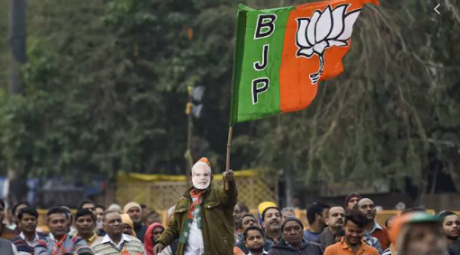The District Development Council (DDC) elections in Union Territory (UT) of Jammu and Kashmir are behind us now with the results declared on December 22 and 23. According to initial data compilation, the BJP emerged as the largest single party with 75 seats, followed by the National Conference (NC) with 67, People’s Democratic Party (PDP) with 27, Congress 26, Apni Party 12, People’s Conference (PC) 8, CPM 5, JKPM 3, People’s Democratic Front (PDF) 2 and 50 Independents.
At one level, it needs to be seen that People’s Alliance for Gupkar Declaration (PAGD) parties together have won around 110 seats. So, as a group opposed to the BJP, they have clearly scored far better than it. Going by these elections, other things apart, the forthcoming assembly elections (to be held after a fresh delimitation) promise to be intense.
In the 2014 Lok Sabha elections, the BJP had got around 48 per cent votes, and in 2019 general elections, the percentage for the party peaked at 59%. In the DDC elections, the percentage of votes for the BJP came down to 34. Obviously, from 59 to 34 is a steep decline any which way you see it. However, it is important to take note of the fact that BJP’s core support in Kathua (13/14 DDC seats), Samba (13/14 seats), Jammu (11/14 seats), Udhampur (11/14 seats) and Doda (8/14 seats) remains intact.
In the Kashmir region, the BJP had winners in three segments of Kakapora-II in Pulwama, Khonmoh-II in Srinagar and Tulail in Bandipora. In Pulwama, it appears the BJP candidate won because the NC and the PDP had both put up candidates there. In Khanmoh in Srinagar, and in Tulail, there were no PAGD candidates in fray. It got around 30,000 votes and that may be a beginning for it.
It is fairly commonplace to brand some parties as secular and some others communal in the electoral politics. The opprobrium of playing communally divisive politics is often enough led on the doors of the BJP these days. Let’s just see the data a bit more closely and see who all got elected during these elections from various parties.
Please take a communal break-up of the winning candidates of various parties and that may make for an interesting reading. We must remember: Facts are sacrosanct, interpretations free, before going any further. Of course, different people will interpret the facts on the ground to suit their own narratives.
Of the 67 DDC members of NC, 64 are Muslims; 26/27 of PDP members are Muslims; 25/26 of Congress members are Muslims; 12/12 of Apni Party winners are Muslims; 8/8 of PC members are Muslims; 5/5 of CPM members are Muslims; 3/3 of JKPM members are Muslims; 2/2 members of PDF are Muslims. The winning candidates of BJP are Hindus as also Muslims. All three of its winners from Kashmir are Muslims as also some of its members from the Jammu region.
Interestingly, the PDP does not have a clear majority in any of 20 districts. In contrast, the Congress has won 8/14 seats each in Baramulla and Shopian. That means its candidates will be heading the DDCs in these two districts. It can also share power with the NC in at least two more districts where there are no clear victors.
How do you interpret all this seemingly disjointed data? Please go ahead and do it any which way you like. Let us look back a little and compare these facts with recent Bihar assembly elections. Much was made by many commentators then that there were no Muslims among the BJP and Janata Dal (United), part of the ruling National Democratic Alliance (NDA).
As is clear from an earlier paragraph, there are several parties here in J&K which have only Muslims as DDC members. How do you interpret that fact and what narrative you push?
Sant Kumar Sharma, a seasoned journalist, is an authority on Jammu and Kashmir. Two of his books on Article 370 and Delimitation are already out. The third one on Indus Waters Treaty is now out and could be bought here.
Sant began as a teacher but after six years, joined the Indian Express, Chandigarh in 1990, the year when terrorism was taking its first step in J & K and soon there would be exodus of lakhs of Kashmiri Pandits from the Valley. He subsequently worked for The Statesman, The Times of India and Star News among others. He is based in Jammu since May 2000.


